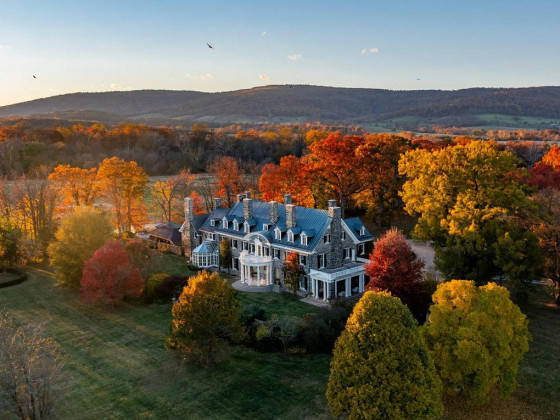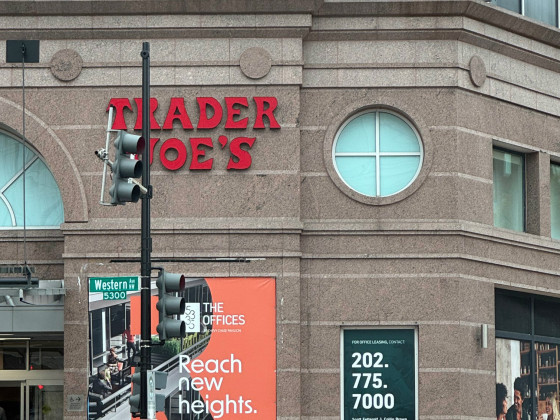 Inspectors Share Some Tips About DC Homes
Inspectors Share Some Tips About DC Homes
✉️ Want to forward this article? Click here.

DC is a city full of homes that are brimming with charm and gravitas, but also approaching an age when many of their original elements begin to deteriorate.
While most buyers will have any property that they are seriously considering purchasing inspected, UrbanTurf reached out to a couple local home inspectors to find out some things, specific to DC homes, that people should be on the look-out for.
Larry Wasson, from Affiliated Inspectors, Inc. Wasson has consulted for the Department of Justice and the FBI.
- Many urban core dwelllings in DC will have lead entering the water supply. Check for mixed metal pipes (copper and galvanized) or unnecessary grounding of phone, cable, appliances to water pipes, which can put an unwanted electrical charge on the pipes, increasing the leach rate of metals (lead) into the home’s water supply. Putting filters at the refrigerator and kitchen sink can help, but do not filter at the entry pipe as you will filter out the chlorine that keeps the house pipes sanitary.
- Electrical wiring in DC houses is often more than 40 years old. Old wiring with deteriorated insulation is extremely prone to arc faults, where currents jump from wire to wire. This is the primary cause of electrical fires in the home. Rewiring a house can cost as much as $25,000, but you can replace the circuit breakers panel with arc fault interrupting breakers for about $3,000.
- Older masonry foundations are very prone to chronic moisture seepage and high humidity in basements and crawl spaces, creating a perfect climate for mold. Installing self-draining 70-pint dehumidifiers will help keep mold at bay.
Cliff Kornegay, from Capitol Hill Home Inspection
- In DC, one of the most common issues that can be overlooked in a home is deteriorated masonry work. Lots of DC row homes need to be repointed every 80-100 years (a process where the old and deteriorated mortar is removed from between the bricks and replaced with new mortar), but property developers will paint masonry walls in an effort to hide deteriorated mortar joints. If repointing has been delayed for too long, window and door arches can fail or sag, moisture can penetrate the walls or worse, structural problems can develop.
- Be sure to take a close look at the roof structure, getting a look at it from the underside, if possible. Most DC row homes have a low slope roof or what some people will call a flat roof. Over time, water leaks, poor installation or a bad choice of lumber can lead to sagging or cracked beams. Those beams are carrying a massive amount of weight and can create more substantial structural issues inside the house. It common for me to find cracked beams resting on ceiling joists or non load bearing partition walls. The result can be a wall that is out of square, an out level floor or stairs.
This article originally published at https://dc.urbanturf.com/articles/blog/inspectors_insider_tips/4781.
Most Popular... This Week • Last 30 Days • Ever

UrbanTurf takes a look at the options DC homeowners and residents have to take advant... read »

A major new residential development is on the boards for a series of properties near ... read »

A new report from DC’s Office of Revenue Analysis highlights how millennials and wo... read »

The building is the second proposal for a pair of aging office buildings in downtown ... read »

The central action before the Board is a rezoning request for the nearly 36-acre site... read »
- A Solar Panel Primer for DC Residents
- 29-Story, 420-Unit Development Pitched For Middle Of Downtown Bethesda
- How DC's Population Changed During And After The Pandemic
- Fitting In: A Narrow 260-Unit Apartment Building Pitched For Bethesda
- Arlington County To Weigh Major Actions Advancing RiverHouse Redevelopment
DC Real Estate Guides
Short guides to navigating the DC-area real estate market
We've collected all our helpful guides for buying, selling and renting in and around Washington, DC in one place. Start browsing below!
First-Timer Primers
Intro guides for first-time home buyers
Unique Spaces
Awesome and unusual real estate from across the DC Metro













